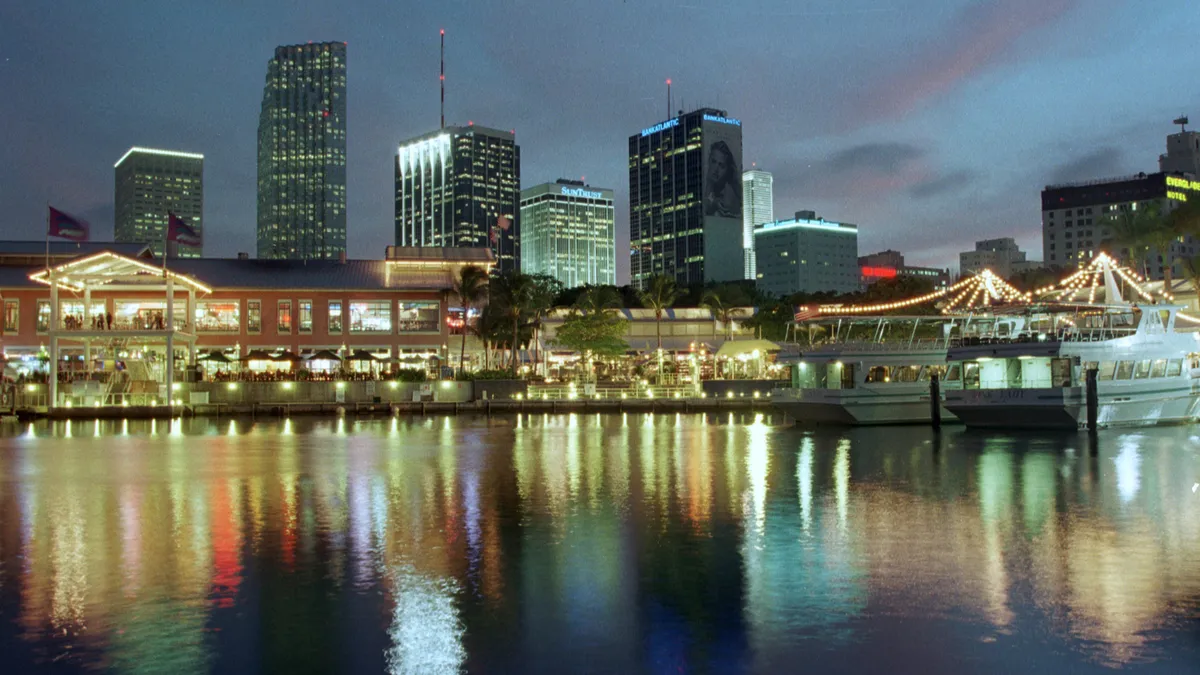Dive Brief:
- U.S. office users retained their strong upper hand in lease negotiations in the first quarter, as landlords offered “generous” tenant improvement allowances to fix up office spaces and periods of no rent to compete for tenants, according to real estate service firm CBRE’s 1Q office report.
- With most of the 57 office markets tracked by CBRE seeing negative net absorption in the first quarter, meaning more space was vacated than leased, the U.S. office vacancy market ticked up to a fresh 30-year high of 19% in 1Q compared to 17.8% in 1Q23, according to the report and additional data provided by CBRE.
- At the same time, executives negotiating leases on space for their companies should be sure to look past the sticker price rents to gauge the costs: landlords persisted in raising average asking rents about 0.4% year-over-year to $36.05 per square foot annually, while average “taking rents,” which do not include concessions, fell by 0.6%, according to the report and CBRE data.
Dive Insight:
The latest data on the health of the office market comes as regulators are closely watching the commercial real estate market’s slump, which has been driven in part by more people working from home and borrowing costs surging.
The Federal Reserve last November flagged the $24 trillion U.S. commercial real estate market as a top risk to financial stability, noting that fundamentals were especially weak for offices in central business districts, CFO Dive previously reported.
This week Jessica Morin, head of U.S. office research for CBRE, said that continued uncertainty in the office market, high interest rates and slower-than expected office-using job growth has pushed the company’s expectation for when the office market will stabilize and bottom out into next year.
Previously, it had been expected that office vacancies would top out at about 19.7% late this year. Now CBRE expects the peak U.S. office vacancy rate to be slightly higher and come a little later, topping out at 19.9% next year. “Office demand is expected to pick up in mid-2025 due to occupiers having better clarity on the economy, office-using job growth, and lower interest rates,” Morin said in an emailed response to questions.
The silver lining in the darker office outlook is that CFOs and finance leaders renewing leases and signing new ones are likely to win favorable deals, perhaps for longer. After steadily rising despite the turmoil in the market, average asking rents are expected to fall through the second quarter of next year when they will hit a low of $35.03 per square foot.
Tenants typically get better deals with longer-term leases, with a tenant signing a 10-year lease potentially expected to get eight to 10 months of free rent today compared to six to eight months in 2019, Morin said in an interview.
But office tenants should also know that markets are nuanced, and that even in the current down cycle location matters, as does the age of the building, she said. “It’s hard to make blanket statements because there are locations and classes of buildings that are doing better than the overall headline rates suggest,” Morin said.













